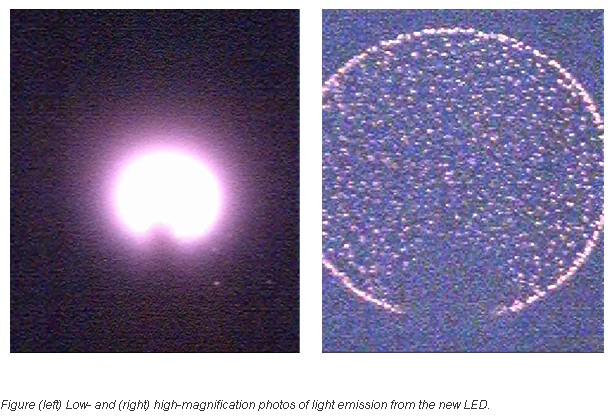Professor Yue Kuo, from the Artie McFerrin Department of Chemical Engineering at Texas A&M University , has fabricated a new type of LED, capable of producing a wide spectrum light while operating for long periods of time at atmospheric conditions. This device is based on a new concept of light emission from an ultra-thin amorphous dielectric layer.

According to an article published in Applied Physics Letters, the light emission mechanism, characteristics of the emission spectrum, fabrication method, and the operation parameter effects on this type of LED. The device was fabricated with the room-temperature sputter deposition method on a silicon wafer. The light emission intensity could be enhanced with a nanocrystal layer embedded in the dielectric film. Most importantly, the complete process and materials are compatible with the existing IC fabrication facility.
“There is a need for a new type of LED that is: low cost, long operation life, small in size, emits white light, and easy to fabricate with environmentally friendly materials and process.” Dr. Kuo says. “ What makes this new LED unique is it meets all of these requirements plus it is extremely easy to fabricate with the existing equipment in all semiconductor fabs.”
The light emitted is composed of small bright dots evenly distributed across the electrode surface. The input voltage controls the intensity or brightness of the LED. Dr. Kuo is very optimistic with the results of his findings. “We have discovered this phenomenon and studied this kind of LED for more than a year. It can be operated continuously for more than ten hours. A longer operation time is expected.”
Kuo‘s discovery has larger implications than just lighting. These LEDs could potentially be integrated into a computer processor; dramatically increasing the speed by transporting signals optically rather than by electrons through copper lines. They could have use in various industries, entertainment, medical, commercial, and military areas due to the compact size and low cost.





 CN
TW
EN
CN
TW
EN






